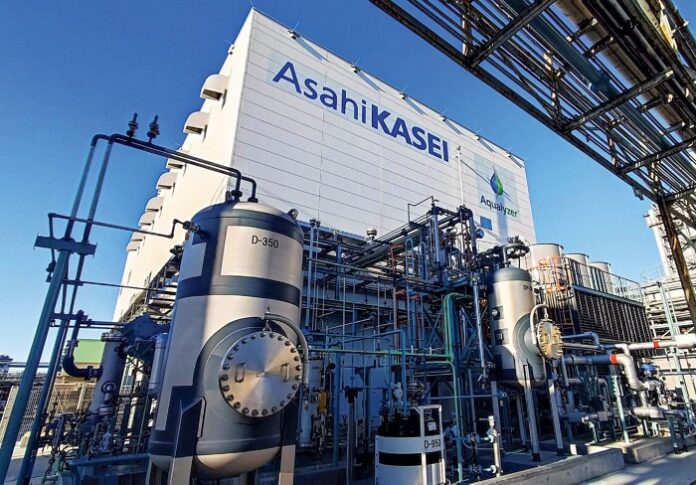Asahi Kasei, the Japanese technology company, and a global leader in advanced materials, has successfully developed a groundbreaking electrolyte that significantly enhances the performance of lithium-ion batteries (LIBs). This technological advancement offers improved power output at low temperatures, increased durability at high temperatures, increased energy density at reduced battery size and cost.
The proprietary electrolyte1, developed by Asahi Kasei’s research team, is based on acetonitrile (AcN), a solvent known for its high ionic conductivity. By optimizing the combination of lithium salts, other solvents, and additives, Asahi Kasei has created an electrolyte that delivers superior performance in LIBs.
The paper was presented on October 3, 2024 by Yoto Iizuka from Asahi Kasei, at the Battery Show – a leading B2B platform for battery technology professionals. The paper detailed Asahi Kasei’s development of a novel electrolyte containing acrylonitrile (AcN) with exceptional battery performance.
Key Benefits of the New Electrolyte:
* Enhanced Power Output: Increased performance even at low temperatures, ensuring reliable operation in various environments.
* Improved Durability: Extended service life at high temperatures, addressing a critical challenge in LIBs.
* Reduced Battery Size and Cost: Smaller battery packs with lower manufacturing costs, enabling more efficient energy storage solutions.
Yuto shared a statement made by Kazuya Noda, Senior General Manager of Asahi Kasei’s Innovation Strategy Center: “This proof of concept is a significant milestone in our ongoing research and development efforts. By licensing this technology to LIB manufacturers worldwide, we aim to contribute to a more sustainable future.”
Yuto explained the challenges in implementing AcN-containing electrolytes in lithium-ion cells that requires precise optimization of Lithium salts, other solvents, and combination of additives to ensure functionality and maximize performance. Asahi Kasei has successfully developed a combination of these ingredients that, when used with AcN, delivers superior performance in lithium-ion cells. The AcN-based electrolyte also enables designers to increase the coating thickness of the anode and cathode, thereby reducing the length of the winding. This results in significant cost savings and higher energy density by reducing the need for current collectors and lowering the dead space of the cells.
Indian battery industry being a highly cost-sensitive market, can benefit from this invention as it reduces cell prices. Given the industry’s preference for LFP (Lithium Iron Phosphate) technology due to safety and cost considerations, the AcN-based electrolyte is well-suited to LFP cells, bringing them closer to higher energy density batteries.
Asahi Kasei plans to commercialize the new electrolyte in 2025, making it available to the global battery industry. This breakthrough technology has the potential to revolutionize the electric vehicle and energy storage markets by offering improved battery performance and reducing costs.
LIBs are recommended to be used within a temperature range of 10 to 45°C. Charging at lower temperatures significantly reduces the battery power performance, which results in significantly lower cell capacity and power output, while charging at higher temperatures results in accelerated aging which reduces battery service life. With the rapidly emerging market of energy storage systems and electric vehicles, stable battery performance and high durability at extreme temperatures are important.
Asahi Kasei is a pioneer in the field of lithium-ion battery research and battery material manufacturing. Asahi Kasei began developing an electrolyte with high ionic conductivity in 2010, when Honorary Fellow Akira Yoshino2 focused on acetonitrile as a promising ingredient in lithium-ion battery electrolytes. By using the high ionic conductive electrolyte, it is possible to reduce batteries pack size while maintaining the power output, contributing to higher battery energy density and lower overall pack cost.




